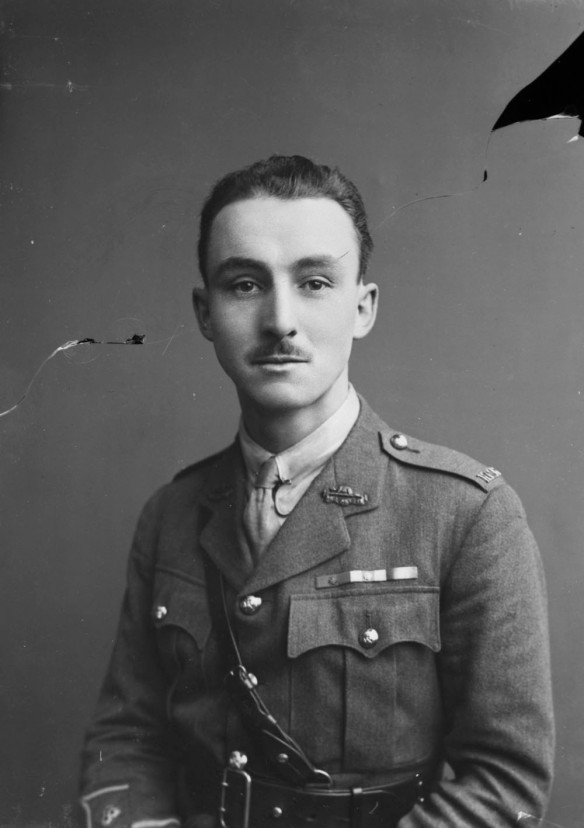By Ashley Dunk
In Library and Archives Canada’s Victoria Cross blog series, we profile Canada’s Victoria Cross recipients on the 100th anniversary of the day they performed heroically in battle, for which they were awarded the Victoria Cross. Today, we remember Lieutenant Milton Fowler Gregg and his courageous actions during the Battle of Canal du Nord on September 28, 1918.
Born on April 10, 1892, in Mountain Dale, Kings County, New Brunswick, Milton Fowler Gregg was a student before enlisting with the Canadian Expeditionary Force on November 5, 1914. Gregg earned the Military Cross in 1917 and was awarded a bar for the Cross for gallant actions in 1918. A decorated soldier, Gregg was serving as a Lieutenant with the Royal Canadian Regiment (RCR) in September 1918.

Lieutenant Milton Fowler Gregg, VC, undated (a006811)
From September 28 to September 30, 1918, the RCR was moving with the 3rd Canadian Infantry Division on operations to cross the Canal du Nord, capture Bourlon Wood and Village, and advance to Cambrai, France. With the ultimate objective of opening the road to Cambrai, it was essential for the RCR to advance and gain a foothold. The RCR assault began at 5:40 a.m. and faced little opposition until it was met with heavy machine-gun fire from enemy soldiers positioned in nearby buildings. Three tanks were brought up as reinforcements; however, the persistent machine guns and anti-tank guns put them out of action.
During the Battle of Canal du Nord, Gregg performed heroically, as in previous operations. On September 28, 1918, both flanks of the brigade were held up by heavy enemy fire, pinned down by rapid machine-gun bursts, and trapped by twisted, uncut barbed wire. Crawling forward alone, Gregg eventually found a small gap in the wire. He led his men through the hole and forced his way into the enemy trench.

Trench mortar referred to as “minenwerfers” were used by the German armies in the Canal du Nord during the Canadian advance east of Arras, September 1918 (a003200)
A heavy counterattack from German soldiers saw increasing RCR casualties, and dwindling bomb supplies, leaving the brigade vulnerable. Gregg, who had been wounded during his forward push, retreated in order to retrieve additional grenades. He rejoined his party with much-needed supplies but suffered a second wound in the effort. Despite his injuries, he reorganized the men and led them against the enemy trenches. Under his leadership, they cleared the enemy trench and gained a footing in the Marcoing Line.

War Diaries, Royal Canadian Regiment, describing operations, September 1918, page 28 (e001072260)
As detailed in the London Gazette:
He personally killed or wounded 11 of the enemy and took 25 prisoners, in addition to 12 machine guns captured in this trench. Remaining with his company in spite of wounds, he again on the 30th September led his men in attack until severely wounded. The outstanding valour of this officer saved many casualties and enabled the advance to continue.
London Gazette, no. 31108, January 6, 1919
Gregg survived the remainder of the war, held a variety of political positions, and served overseas during the Second World War. He passed away on March 13, 1978, at the age of 85. His Victoria Cross is on display at the Royal Canadian Regiment Museum in London, Ontario.
Library and Archives Canada holds the digitized service file of Lieutenant Milton Fowler Gregg.
Want to experience life during a time of war?
The War Diaries of the Royal Canadian Regiment are open for you to transcribe, tag, translate and describe their contents. Every addition to a record becomes new metadata, searchable within 24 hours, helping Library and Archives Canada’s records become more “discoverable” day after day. Read the blog article explaining how you can give a hand to history!
Ashley Dunk was a project assistant in the Online Content Division of the Public Services Branch at Library and Archives Canada.
